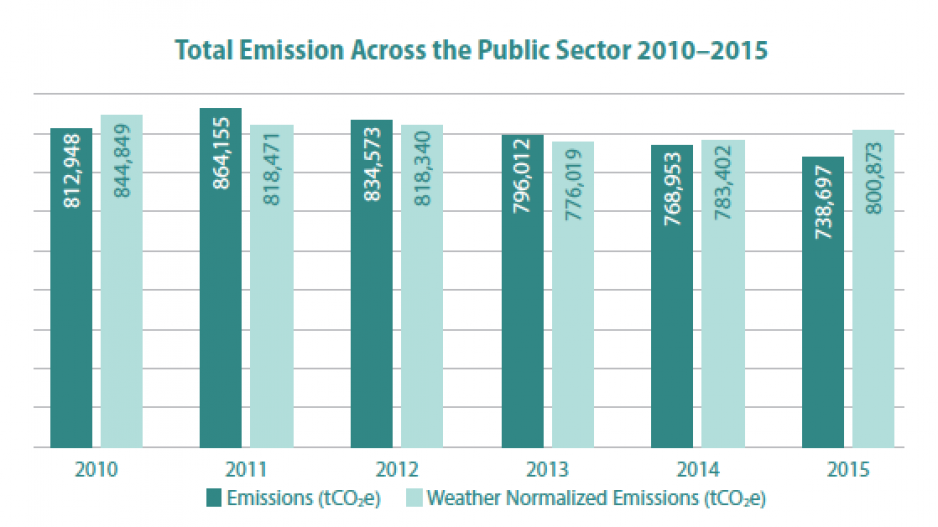The B.C. government says it has achieved carbon neutrality in the public sector for the sixth consecutive year.
But that neutrality continues to be accomplished by punishing schools, hospitals and other public institutions that are financially constrained from investing in energy efficiencies by fining them.
Every year, as part of its carbon neutral government policy, the B.C. government forces Crown corporations, school and hospital districts and municipal government that fail to become carbon neutral to pay carbon offsets. It’s a form of cap and trade that applies only to the public sector.
In 2015, it collected $15.6 million in carbon fines from the public sector. It then uses some of the money it collects to buy carbon credits in the private sector to help businesses reduce their own carbon footprint by investing in energy efficiency, fuel switching and other projects that reduce greenhouse gas emissions.
In 2015, B.C.’s public sector produced 44,000 tonnes fewer greenhouse gas emissions than in 2010, according to the Ministry of Environment’s annual Carbon Neutral Government report , released Thursday, July 29. That’s the equivalent of taking 9,400 cars off the road.
But when the data is “normalized for weather,” the public sector actually generated more GHGs in 2015 and 2014 than it did in 2013, according to Hadi Dowlatabadi, a University of BC professor and research chairman for applied mathematics and integrated assessment of climate change.
“They are claiming declines because they’re doing emissions based on actual weather,” he said. “When you do weather normalized, this is the second year in a row – 2014 and 2015 were both higher than 2013. It’s their own data.”
Health authorities and school districts continue to get hammered under the carbon neutral policy, with the Fraser and Interior Health Authorities forced to pay close to $1 million each in carbon offsets in 2015.
Health authorities overall in B.C. paid a little over $5 million in 2015 in carbon offsets. School districts paid $3.5 million.
Hardest hit are districts like Surrey, where growing enrolment means more portables, which are not energy efficient.
The Surrey school district was forced to pay $388,750 in carbon offsets in 2015. Vancouver school district paid $361,950.
In 2015, the B.C. government bought $7.2 million worth of credits, the bulk of which went to forestry conservation projects, which are controversial.
In 2015, an improved forestry management project for the north and central cost region of the Great Bear Rain Forest received $1 million.
The Haida Gwaii area of the Great Bear Rain Forest received $3.1 million. The Cheakamus Community Forest in Whistler received $297,458.
Dowlatabadi thinks investing in carbon sinks, like forestry conservation, is the least valuable investment, when it comes to getting actual, measurable carbon reductions. For one thing, the actual carbon reduction that results from simply letting trees grow is difficult to measure, and the investment can be wiped with a single forest fire or pest infestation.
Dowlatabadi would rather see any carbon credits the province collects go into funding energy efficiency projects that will help schools and hospitals actually achieve the carbon neutrality the policy is supposed to encourage.
He thinks the amount the government is currently investing is far too little.
“If you’re the government, you can buy debt at 3% or less, and capitalize all your future offset debt,” he said. “You’ve got $15 million a year, you could borrow $15 million at 3% for years into the future and invest all of that in improving the infrastructure in the province, rather than putting it into a forest that could go up in smoke tomorrow.”




